Recipes
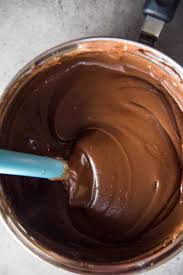
Pastry Cream Chocolate
In a heavy saucepan, dissolve the sugar in the milk and bring just to a boil. With a whip, beat the egg yolks in a stainless-steel bowl. Sift the cornstarch and sugar into the eggs. Beat with the whip until perfectly smooth. Temper the egg mixture by slowly beating in the hot milk in a thin stream. Return the mixture to the heat and bring to a boil, stirring constantly. When the mixture comes to a boil and thickens, remove from the heat. Stir in the couverture noire callebaut Mix until is melted and completely blended in. Pour out into a clean, sanitized hotel pan or other shallow pan. Dust lightly with sugar and cover with waxed paper to prevent a crust from forming. Cool and chill as quickly as possible.
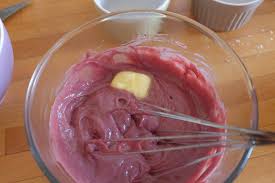
Pastry Cream Blackcurrant Fruit
Bring the puree to a boil. Blanch yolks and eggs with sugar. Add the starch. Pour half of the puree over the yellow mixture / egg / sugar and starch. Put all in pan and cook 2 minutes after boiling. Add the butter and cool the cream with the whisk (gently) to smooth it without relaxing it too much
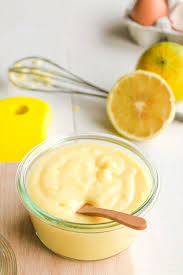
Pastry Cream Bergamote Fruit
Bring the puree to a boil. Blanch yolks and eggs with sugar. Add the starch. Pour half of the puree over the yellow mixture / egg / sugar and starch. Put all in pan and cook 2 minutes after boiling. Add the butter and cool the cream with the whisk (gently) to smooth it without relaxing it too much
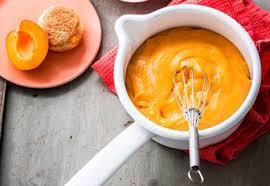
Pastry Cream Apricot Fruit
Boil the apricot puree Mix the eggs yolk with sugar, vanilla and pastry cream powder. Pour the puree into the eggs yolk and place back to the stove. Cook until starch are well cook and place in chiller to cool down. Option: Add 50gr butter in the pastry cream
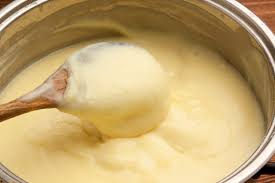
Pastry Cream
In a heavy saucepan, dissolve the sugar in the milk and bring just to a boil. With a whip, beat the egg yolks in a stainless-steel bowl. Sift the cornstarch and sugar into the eggs. Beat with the whip until perfectly smooth. Temper the egg mixture by slowly beating in the hot milk in a thin stream. Return the mixture to the heat and bring to a boil, stirring constantly. When the mixture comes to a boil and thickens, remove from the heat. Mix until the butter is melted and completely blended in. Pour out into a clean, sanitized hotel pan or other shallow pan. Dust lightly with sugar and cover with waxed paper to prevent a crust from forming. Cool and chill as quickly as possible. For filling pastries such as éclairs and napoleons, whip the chilled pastry cream until smooth before using.
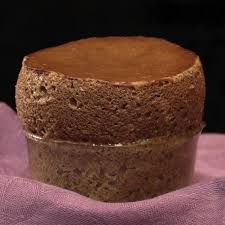
chocolate soufflé café noir
To melt chocolate. Bring the milk to a boil, mixed with the starch. Pour over the melted chocolate and smooth with the whisk. At the same time, mount the blanks with the "birdbill" casing. Add a portion of the blanks to the first unit and then the yellow ones. Smooth and finish the mixture with the Maryse with the rest of the whites. Poach in buttered, sweet ramekins. Bake at 190 ° C for 6-7 min depending on size. The expected result is to preserve the heart of the blown very flexible. Keep the soufflés before cooking in the fridge for a few hours or in the freezer for several days.
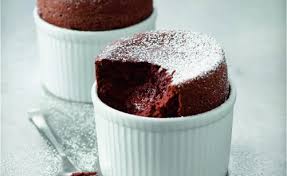
Chocolate Soufflé Araguani
To melt chocolate. Bring the milk to a boil, mixed with the starch. Pour over the melted chocolate and smooth with the whisk. At the same time, mount the blanks with the "birdbill" casing. Add a portion of the blanks to the first unit and then the yellow ones. Smooth and finish the mixture with the Maryse with the rest of the whites. Poach in buttered, sweet ramekins. Bake at 190°C for 6-7 min depending on size. The expected result is to preserve the heart of the blown very flexible. Keep the soufflés before cooking in the fridge for a few hours or in the freezer for several days.
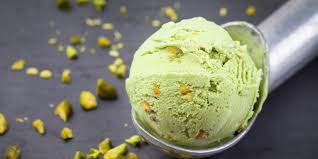
pistachio ice cream
Heat the egg yolks, milk, cream, powdered milk, pistachio paste and sugar to 85 °C to make a crème anglaise. Strain through a china cap sieve and cool. mature by Resting for 24 hrs before using.
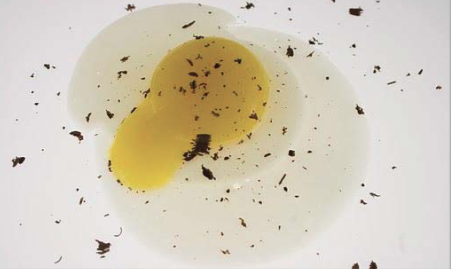
egg molecular
1. Make the alginate bath, dissolve the sodium alginate in 2 cups of water with a hand blender or an egg beater. Refrigerate for 15 minutes. 2. In a pan, mix the milk and agar-agar. Bring to a boil. 3. Add milk preparation to yogurt and stir well. 4. Pour the yogurt over a plate twice successively to create the shape of a sunny-side up egg white. Refrigerate for 15 minutes. 5. In a blender, puree the mango, sugar and calcium lactate. 6. Using a measuring spoon, deposit mango puree into the alginate bath. Let sit for 3 minutes. 7. Pick up the “egg yolks” with a pierced spoon and rinse them in a bowl of water. 8. Place the “yolks” on the “whites” and season with chocolate powder if desired.
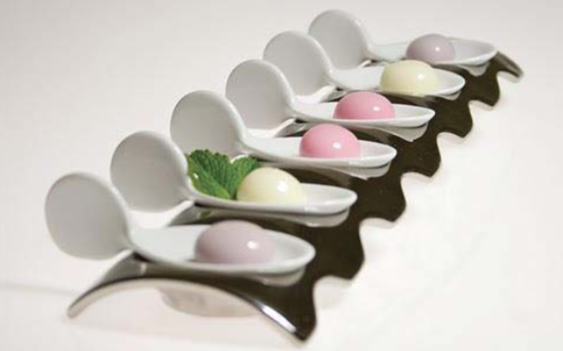
yogurt ravioles spherification
1. Make the alginate bath, dissolve the sodium alginate in 2 cups of water with a hand blender or an egg beater. Refrigerate for 15 minutes. 2. In an other bowl,dissolve the calcium lactate in the yogurt, stirring with a spoon. 3. Using a measuring spoon, deposit small quantities of the yogurt mixture into the alginate bath. Let sit for 3 minutes. 4. Pick up the ravioles with a pierced spoon and rinse them in a bowl of water. Please note: Gently turn your spheres during the bath so they can jellify equally. Normally, 3 minutes in the alginate bath is enough to be able to manipulate a sphere without piercing it. The longer the sphere stays in the bath, the thicker the gel membrane will be. Make sure the spheres do not touch each other in the bath as if they touch they will stick together.
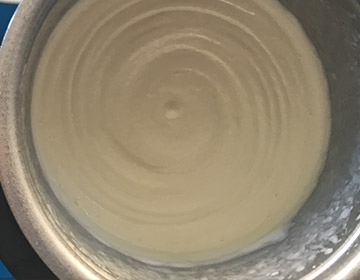
Yogurt Ice Cream (Pacojet)
Step 1: Fill the pacotizing beaker Mix all ingredients together and pour into a pacotizing beaker. Step 2: Freeze Seal the pacotizing beaker, label and freeze at -22 °C for at least 24 hours. Step 3: Pacotize

Pisctachio Ice Cream (Pacojet)
Step 1: Fill the pacotizing beaker Mix all ingredients together, heat to 82 °C and stir until thick. Place in a pacotizing beaker. Step 2: Freeze Seal the pacotizing beaker, abel and freeze at -22 °C for at least 24 hours. Step 3: Pacotize
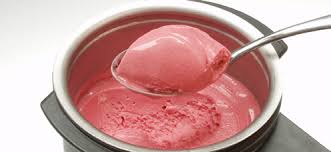
Strawberry Ice Cream (Pacojet)
Step 1: Fill the pacotizing beaker Bring cream and sugar to a boil, allow to cool for a few minutes and mix with remaining ingredients. Strain and pour into a pacotizing beaker. Step 2: Freeze Seal the pacotizing beaker, abel and (3) freeze at -22 °C for at least 24 hours. Step 3: Pacotize

Vanilla Ice-Cream (pacojet)
Step 1: Fill the pacotizing beaker Scrape out vanilla pod, mix pulp and pod with the remaining ingredients. heat to 82 °C and stir until thick. Remove pod and pour the mixture into a pacotizing beaker. Step 2: Freeze Seal the pacotizing beaker, label and freeze at -22 °C for at least 24 hours. Step 3: Pacotize
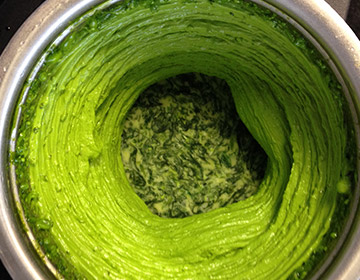
Pesto Paste (Pacojet)
Step 1: Fill the pacotizing beaker Blanch basil in boiling water and immediately cool in ice water. Remove from water, squeeze out well, chop roughly and place with remaining ingredients in a pacotizing beaker. Step 2: Freeze Seal the pacotizing beaker, label and freeze at -22 °C for at least 24 hours. Step 3: Pacotize twice as needed

Milk Chocolate Ice Cream (Pacojet)
Step 1: Fill the pacotizing beaker Mix sugar, milk, cream and eggs well together and heat to 82 °C. Add chopped chocolate, stir and pour into a pacotizing beaker. Step 2: Freeze Seal the pacotizing beaker, label and freeze at -22 °C for at least 24 hours. Step 3: Pacotize twice as needed
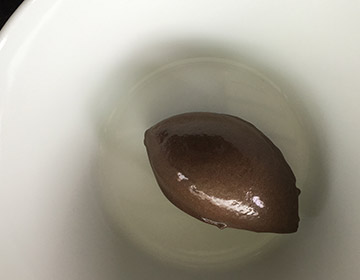
chocolate sorbet
Step 1: Fill the pacotizing beaker Mix and bring water, sugar and cocoa to a boil. Pour over the chopped chocolate and stir. Place in a pacotizing beaker and allow to cool. Step 2: Freeze Seal the pacotizing beaker, label and freeze at -22 °C for at least 24 hours. Step 3: Pacotize twice

Hybiscus Ice Cream (Pacojet)
Step 1: Fill the pacotizing® beaker Mix cream, milk, eggs and sugar well. Heat up to 82°C, constantly stirring. Stir in hibiscus syrup and white chocolate. hibiscus tea, steep for 20 mintues and remove hibiscus Peal and grate ginger and add to the mixture, to taste. Fill into a pacotizing beaker. Step 2: Freeze Seal the pacotizing® beaker, label and freeze at -22 °C for at least 24 hours. Step 3: Pacotize
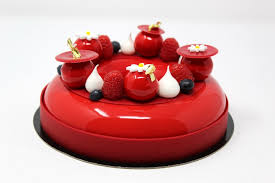
glacage absolute raspberry
Vigorously mix the Neutral Neutral Crystal Absolute, the water and the vanilla beans from the scraped pod, until a soft texture is obtained. Add the passion seeds and citrus zest and apply to your support.
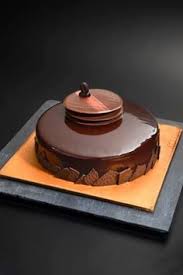
Glacage Absolute Equatorial
Make a ganache properly smoothed. Start with the whipping cream and the chocolate, then add at the end of the mixture the Neutral Neutral Neutral Melting at 70/80 ° C. (All mixing should be done at the Maryse to avoid the formation of air bubbles.) strained in chinois Glazing involves depositing a film of icing covering the entire surface of the product. Used pure, colored or mixed with other ingredients, the glaze will give your recipes a more attractive look and feel. This is the final scenery. The glaze gives a mirror effect. • 3 application techniques: - Spraying - Pouring - Soaking
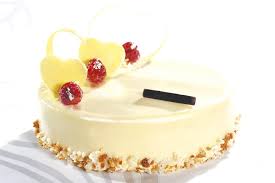
glacage absolute ivoire
Make a ganache properly smoothed. Start with the whipping cream and the chocolate, then add at the end of the mixture the Neutral Neutral Neutral Melting at 70/80 ° C. (All mixing should be done at the Maryse to avoid the formation of air bubbles.) strained in chinois Glazing involves depositing a film of icing covering the entire surface of the product. Used pure, colored or mixed with other ingredients, the glaze will give your recipes a more attractive look and feel. This is the final scenery. The glaze gives a mirror effect. • 3 application techniques: - Spraying - Pouring - Soaking
